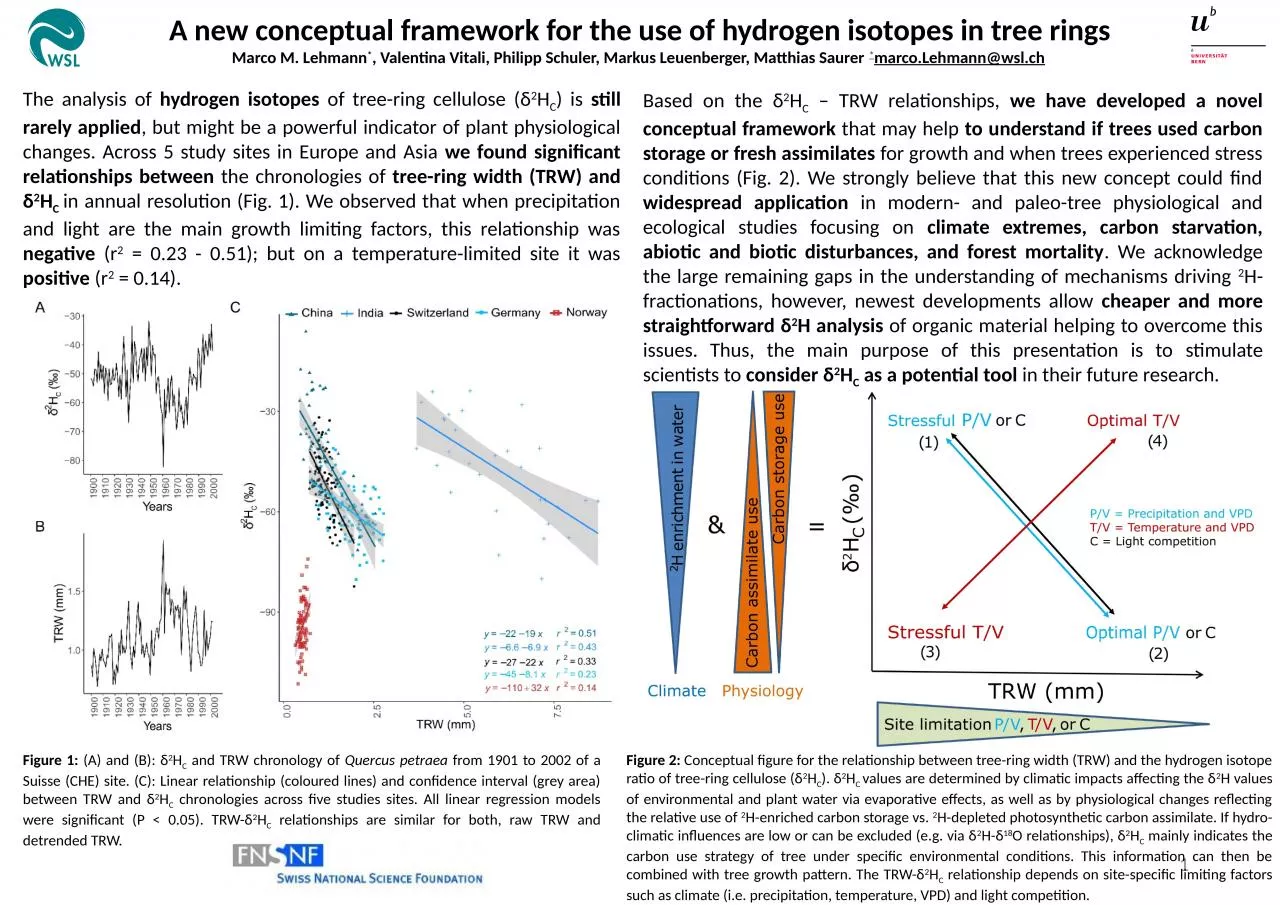

rings Marco M Lehmann Valentina Vitali Philipp Schuler Markus Leuenberger Matthias Saurer marcoLehmannwslch The analysis of hydrogen isotopes ID: 1025525
Download Presentation The PPT/PDF document "1 A new conceptual framework for the use..." is the property of its rightful owner. Permission is granted to download and print the materials on this web site for personal, non-commercial use only, and to display it on your personal computer provided you do not modify the materials and that you retain all copyright notices contained in the materials. By downloading content from our website, you accept the terms of this agreement.
1. 1A new conceptual framework for the use of hydrogen isotopes in tree ringsMarco M. Lehmann*, Valentina Vitali, Philipp Schuler, Markus Leuenberger, Matthias Saurer *marco.Lehmann@wsl.ch The analysis of hydrogen isotopes of tree-ring cellulose (δ2HC) is still rarely applied, but might be a powerful indicator of plant physiological changes. Across 5 study sites in Europe and Asia we found significant relationships between the chronologies of tree-ring width (TRW) and δ2HC in annual resolution (Fig. 1). We observed that when precipitation and light are the main growth limiting factors, this relationship was negative (r2 = 0.23 - 0.51); but on a temperature-limited site it was positive (r2 = 0.14).Based on the δ2HC – TRW relationships, we have developed a novel conceptual framework that may help to understand if trees used carbon storage or fresh assimilates for growth and when trees experienced stress conditions (Fig. 2). We strongly believe that this new concept could find widespread application in modern- and paleo-tree physiological and ecological studies focusing on climate extremes, carbon starvation, abiotic and biotic disturbances, and forest mortality. We acknowledge the large remaining gaps in the understanding of mechanisms driving 2H-fractionations, however, newest developments allow cheaper and more straightforward δ2H analysis of organic material helping to overcome this issues. Thus, the main purpose of this presentation is to stimulate scientists to consider δ2HC as a potential tool in their future research.Figure 1: (A) and (B): δ2HC and TRW chronology of Quercus petraea from 1901 to 2002 of a Suisse (CHE) site. (C): Linear relationship (coloured lines) and confidence interval (grey area) between TRW and δ2HC chronologies across five studies sites. All linear regression models were significant (P < 0.05). TRW-δ2HC relationships are similar for both, raw TRW and detrended TRW.Figure 2: Conceptual figure for the relationship between tree-ring width (TRW) and the hydrogen isotope ratio of tree-ring cellulose (δ2HC). δ2HC values are determined by climatic impacts affecting the δ2H values of environmental and plant water via evaporative effects, as well as by physiological changes reflecting the relative use of 2H-enriched carbon storage vs. 2H-depleted photosynthetic carbon assimilate. If hydro-climatic influences are low or can be excluded (e.g. via δ2H-δ18O relationships), δ2HC mainly indicates the carbon use strategy of tree under specific environmental conditions. This information can then be combined with tree growth pattern. The TRW-δ2HC relationship depends on site-specific limiting factors such as climate (i.e. precipitation, temperature, VPD) and light competition.